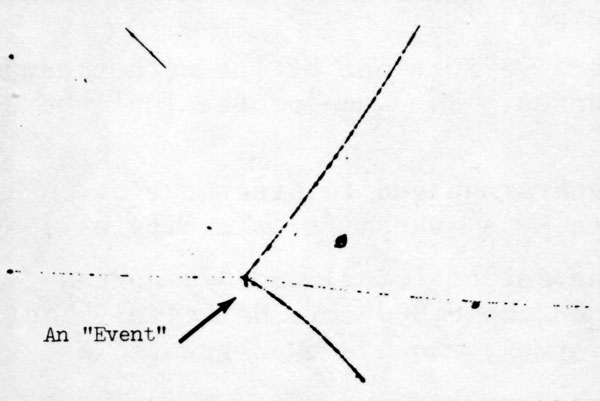Film Analysis Facility Gains Expertise for Bubble Chamber Efforts
(This is the second article on NAL's Film Analysis Facility. It was written with the cooperation of Ray Hanft, Dixon Bogert (Physics Research), Ernest Malamud (Main Ring), Richard Mobley (Beam Targetry), and Roland Juhala (Booster).)
In simple terms, a bubble chamber is a device used for the detection and the study of elementary particles and nuclear reactions. Charged particles from an accelerator are introduced into a super-heated liquid, each forming a trail of bubbles along its path. The trails are photographed, and by studying such pictures scientists can identify the particles and analyze the nuclear "events" in which they originate.
As part of NAL's experimental facilities, work is progressing on a Neutrino Laboratory. It will include a Bubble Chamber area on which foundation work has been completed. A special Bubble Chamber group, under the direction of William B. Fowler, has been concerned with the design of this facility which will have a track length of 15 feet. Work on this target area is scheduled for completion in the summer of 1972; however, it will be available for improvised experimental use several months earlier. It is expected that the bubble chamber will be in operation by January of 1973. In addition, it is expected that the 30-inch bubble chamber which NAL is receiving from the Argonne National Laboratory will be in operation at NAL next November.
At present, NAL "scanners" are concerned with analyzing an experiment designed to obtain large numbers of events of the types:
K+ + n → K+ + π- + p
K+ + n → K° + π° + p
Such events when interpreted in terms of a specific theoretical framework can be used to reveal information on the interaction between K and π mesons.
At the Bevatron (the 6 BeV proton accelerator at the Lawrence Radiation Laboratory in Berkeley, California) a beam for selecting K+ mesons passed through a 25-inch diameter bubble chamber filled with liquid deuterium and the chamber was photographed. A total of 800,000 sets of stereoscopic photographs was taken. The deuterium nucleus consists of 1 proton and 1 neutron. When a K+ meson in the beam "interacts" with a neutron "target" reactions of the type listed above may occur. An example is shown below.
It is the scanner's job to find these events and measure them. In the photograph at the left the particles are bent by a magnetic field. In this particular example the positive tracks curve up and the one negative track (a π meson) curves in the opposite direction. The short stubby track is the recoiling proton in the deuterium nucleus which "observes" the K+ neutron interaction from a distance.
This experiment is being done in collaboration with physicists at the University of California, Los Angeles, and the California Institute of Technology. Those associated with the experiment at NAL are Thomas Borak, Radiation Physics; Roland Juhala, Booster,and Ernest Malamud, Main Ring.
A spark chamber experiment at Argonne is designed to study the mass spectrum of the A2 meson in the "eta-pi" decay mode via the reaction:
π- + p → A-2 + p | → η° + π- | → γ + γ
In a double arm spectrometer, the recoil proton is detected in one arm. The π is observed in a thin plate spark chamber in the other arm, and the gamma rays are seen when they convert to an electron shower in a thick plate spark chamber. See illustration at right.
This experiment is being done in collaboration with physicists at the Universities of Chicago, Wisconsin and Toronto. The NAL physicist involved is Richard Mobley. Other physicists involved are: Gianni Conforto, Rutherford Lab.- U.K.; Martin Kramer and David Underwood, University of Chicago; Mike Witherell, Don Tompkins and Dick Prepost, of Wisconsin, and Anthony Key and YuenKwok, University of Toronto.
At present, the Film Analysis Facility staff includes the following: Dixon Bogert and Raymond Hanft, physicists; Robert Cavanaugh, engineer; Bruce Chrisman and Glenn Johnson, programmers; Carl Lindenmeyer, designer; Richard Bingham, Arthur Cook, Curtis Danner and Martin Glass, Technical Support; Annette Albano, Dawn Chartrand, Christine Dedin, Barbara Cox, Judy Dill, Teresa Downs, and Harriet Otavka, Scanning and Measuring Staff.




